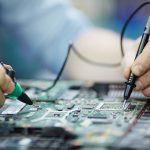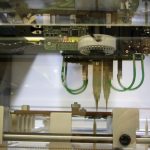Space is a precarious place: Having the most advanced gear does not rule out risks related to body strength and immune. Not even the most intricate electronics in space machinery are risk-free.
Identifying these risks can be a big step towards properly managing them. Space dust, debris, and system faults make space visits tricky. Electronic reliability can give that extra confidence of success. No wonder some individuals are willing to pay $55 million to spend eight days at the International Space Station.
Let us talk more about reliable electronics and electronic systems in the space environment.
Wide Range of Space Risks
Space mission failures are not always explainable even by the most experienced engineers. The unpredictability and danger involved are simply too high because of the following factors:
Collisions
The past decade has seen the number of manmade objects crisscrossing the space increase significantly. Crowding increases collision risk, especially with the existence of defunct spaceships. A small disruption in communication with the earth crew can result in deadly collisions. Collisions can also emanate from rocket parts and other debris.
Space Dust
Electronics for space are also prone to damage caused by cosmic dust. When the dust converts into plasma, it can have grave consequences on electronics.
Orbit Mistake
Satellites rely on a propelling force to travel. Glitches can occur and the satellite lands into an incorrect orbit. For instance, the Ariane 5 rocket developed communications problems during launch which ended up placing satellites into incorrect orbits.
System Issues
Sometimes, space problems are internal. Anything in the spacecraft can generate a fault- electronics, power, thermal, communications, and so on.
Role Played by Reliable Electronics
During the design of the electronic gadget you are using as you read this post, the engineers had several expectations. One is that you would use it in a normal environment. But what happens to electronic devices and systems sent into space? What makes them reliable in the harsh environment?
There is a reason the US Department of Defense recommends more than 100 tests for space electronic components. The gamma rays, protons, X-rays, and other forms of radiation bombard space systems and consequently the respective electronics. Fast temperature changes are only some of the resulting challenges. Numerous tests ensure electronics reliability in not only temperature fluctuations, but also elevated ionizing radiation and high mechanical stress.
The traditional solution is using space-type electronics. One of the most effective methods of achieving reliable space electronics is hardening. The hardening process ensures that the item or system will last in a harsh environment.
Below is a list of some hardening techniques in application today:
- External shielding
- Using Static RAMs (SRAM)in place of Dynamic RAMs (DRAM)
- Potting
- Insulating substrate for space chips
MADES for Reliable Electronics in New Space
MADES has adequate experience to produce electronic systems and subsystems that meet the strictest of standards for new space machine design. For every piece of equipment that we manufacture, the client must be able to enjoy a high level of competitiveness in products that cannot fail.
Two indications of this reliability are our on-time delivery metrics and our production process rejection rates, which are far better than industry standards. Some of our new space-borne systems are OBC (On-Board Computers), Payload Communications, Power Distribution Modules (PDM), and Power Control Modules (PCM).
Conclusion
The aerospace industry is continually advancing technologically. Similarly, the safety and reliability requirements are more stringent. Not even the simplest electronic connector can afford to have doubtable electronics reliability. MADES continues to play a notable role in new space electronics during these critical times.





